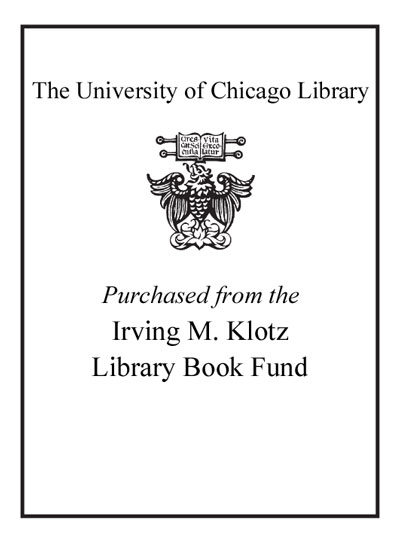Review by Booklist Review
Long smothered in the superstitions of alchemy, chemistry finally acquired the theoretical structure of a true science with the bold hypothesis of elemental periodicity first advanced by Dmitri Mendeleyev, an irascible Russian who claimed that it all came to him in a dream. But no mystical slumber could ever have prompted such a revelation without the prior wakeful labors of dozens of investigators. In a tale at once lively and far ranging, Strathern recounts the work of Mendeleyev's numerous predecessors--from Thales (who argued that all things come from water) to Cavendish (who gauged the strength of electrical charges by recording the pain they caused him). Strathern's account focuses on the discovery of concepts--explained for the nonscientist with merciful clarity--essential to Mendeleyev's vision, but it also explores the irreducible mysteries in the personalities of those who discovered the concepts. A book that brings lucidity to science while restoring human complexity to the scientists who do it: What more could a reader want? --Bryce Christensen
From Booklist, Copyright (c) American Library Association. Used with permission.
Review by Publisher's Weekly Review
One of the few things most of us remember from that long-ago high school chemistry class is the periodic table, with the elements laid out like cards in a game of solitaire, the alkali metals running down the left-hand side, the noble gases down the right, and so on. In this readable but flawed book, prolific author Strathern (Hawking and Black Holes; Crick, Watson and DNA; etc.) uses the creation of the periodic table by the great Russian scientist Dmitri Mendeleyev, who literally dreamed it up, to bookend a journey through the history of chemistry. The author's fascinating accounts of the peculiar early-modern "scientists" really closer to the medieval alchemists Paracelsus and Giordano Bruno (the latter Galileo's unlucky predecessor before the Inquisition) show how quackery can combine with real insight to make notable advances in science. But despite many elegantly written pages often filled with good information, much of the book seems facile and hurried, tarnished by statements that are only partly correct and by outright misstatements. (For example, playwright Christopher Marlowe could hardly have been involved in the Gunpowder Plot, since he was murdered 12 years earlier.) Strathern too frequently wanders off on overly extended tangents about historical figures like Sir Francis Bacon, certainly a man important to the history of science but not to the history of chemistry. A book just about Mendeleyev would have proved more useful and worthy of a place on bookshelves. Despite this work's many merits, Strathern's authorial alchemy hasn't managed to turn his base elements into gold. Illus. (Apr.) (c) Copyright PWxyz, LLC. All rights reserved
(c) Copyright PWxyz, LLC. All rights reserved
Review by Library Journal Review
Despite its title, this is not a biography of Dmitri Mendeleyev, the Russian scientist who formulated the Periodic Table of Elements. Rather, it is a lay reader's history of chemistry or, more broadly, scientific thought, from the ancient Greeks through the 19th century. Strathern's diverting style of writing fleshes out the scientists who labored to define what the elemental building blocks of the universe are. With 20/20 hindsight, he shows the misconceptions that took chemistry down unproductive paths and brings to light scientists whose surprising theoretical prescience and genius were unknown in their own time. Strathern's "Big Idea" series of scientific biography and his "Philosophy in 90 Minutes" series, both designed for the novice, prepared him well for the task of relating the personalities and philosophies of these elemental discoverers to the nonscientist. Recommended for public and academic libraries. Wade M. Lee, Univ. of Toledo Libs. (c) Copyright 2010. Library Journals LLC, a wholly owned subsidiary of Media Source, Inc. No redistribution permitted.
(c) Copyright Library Journals LLC, a wholly owned subsidiary of Media Source, Inc. No redistribution permitted.
Review by Kirkus Book Review
A nimble chronological history of the transformation of sorcery and superstition into chemistry. Strathern ( Foucault in 90 Minutes , 2000, etc.) does not focus on a single figure (despite his title), but instead addresses the fluidity of ideas over spans of time and space, demonstrating how the systemic ordering of the elements (a breakthrough in understanding akin to gravity) was ultimately grasped. He weaves his story from historical strands, commencing with the beginnings of scientific thought and the pre-science of alchemy (popular for centuries despite censure). Simultaneously, he presents his narrative as inseparable from the volatile personalities of great scientists, beginning with Paracelsusa swashbuckling 16th-century itinerant who, in synthesizing secret arts like alchemy and midwifery, may have been the first emergent chemist. The author demonstrates a keen eye for detail and a great affection for his subjects; these portraits are humorous and dramatic rather than dry. This is epitomized by the story of Giordano Bruno, who invented a revolutionary memory system only to be burned at the stake in 1600 under orders of Pope Clement VIII. The Inquisition aside, Strathern perceives a real jump forward in scientific development during the 17th century, sparked by such disparate achievements as Galileos perfection of the telescope, the reason-based philosophy of Descartes, and Francis Bacons science of thought and practice (which was primary in asserting the potentially enormous benefits of such experimentation for humankind). Finally, the author sees in the gnome-like, isolated figure of Mendeleyev a template both for the eternally lonesome scientific quest and for the structuring of chemical understanding (upon which biological understanding is predicated). He concludes by depicting Mendeleyevs innovations in understanding and his 1869 dream, in which the elements fell into place as required . . . the elements were listed in order of their atomic weights, their properties repeated in a series of periodic intervals. Crisp, provocative entertainment for armchair scientists, and a solid survey for more serious readers.
Copyright (c) Kirkus Reviews, used with permission.
Review by Booklist Review
Review by Publisher's Weekly Review
Review by Library Journal Review
Review by Kirkus Book Review


